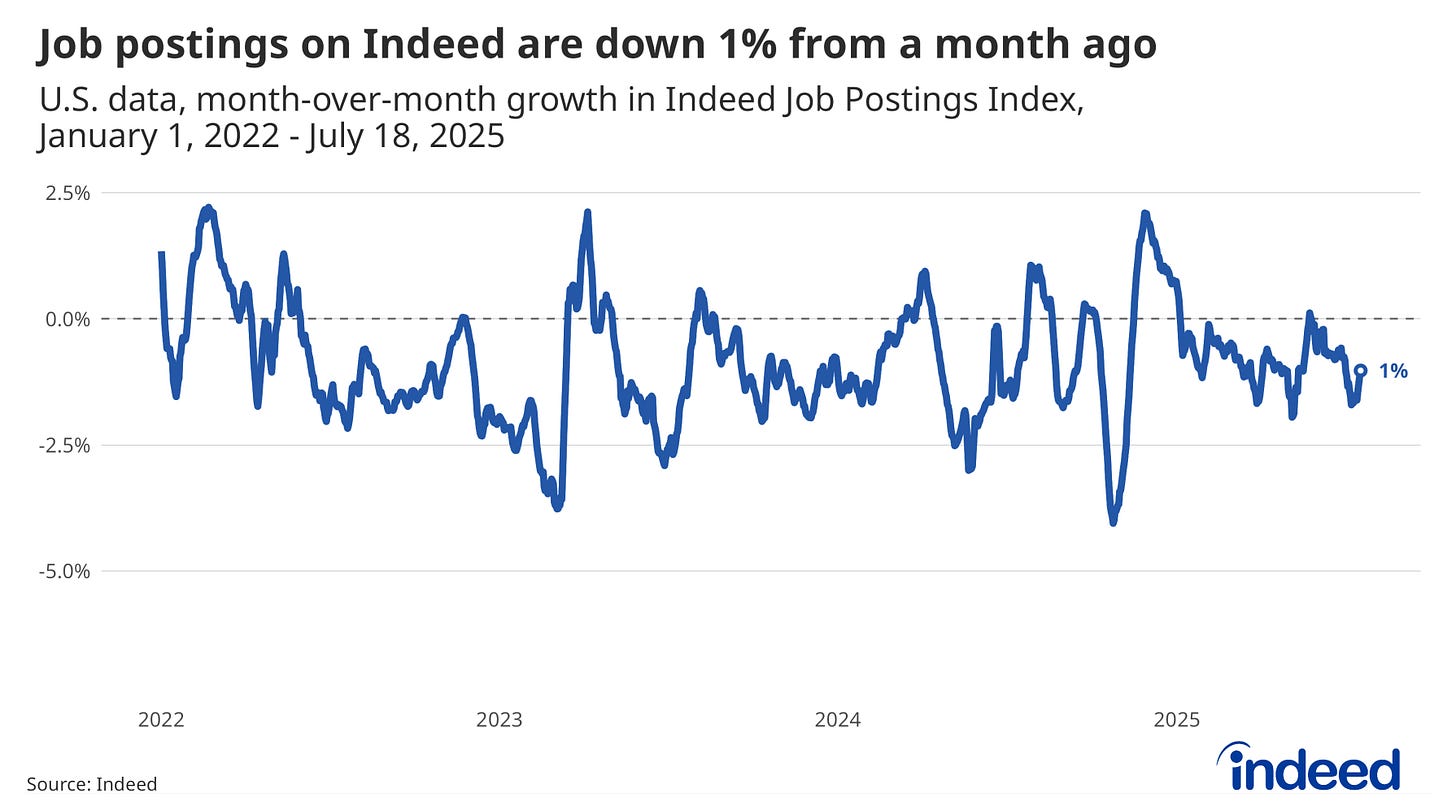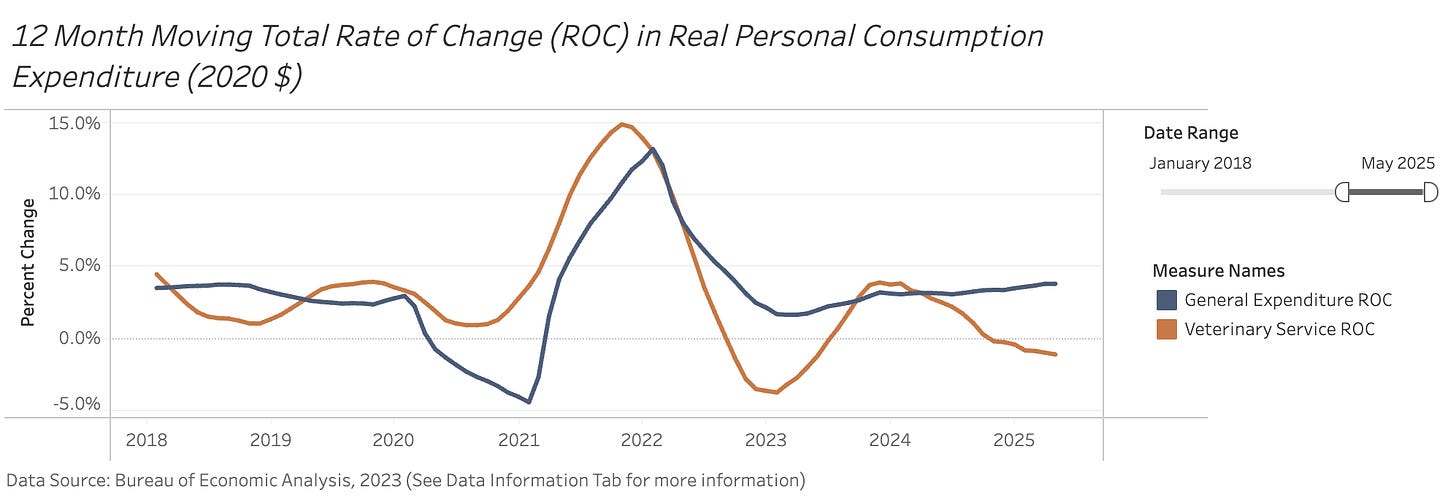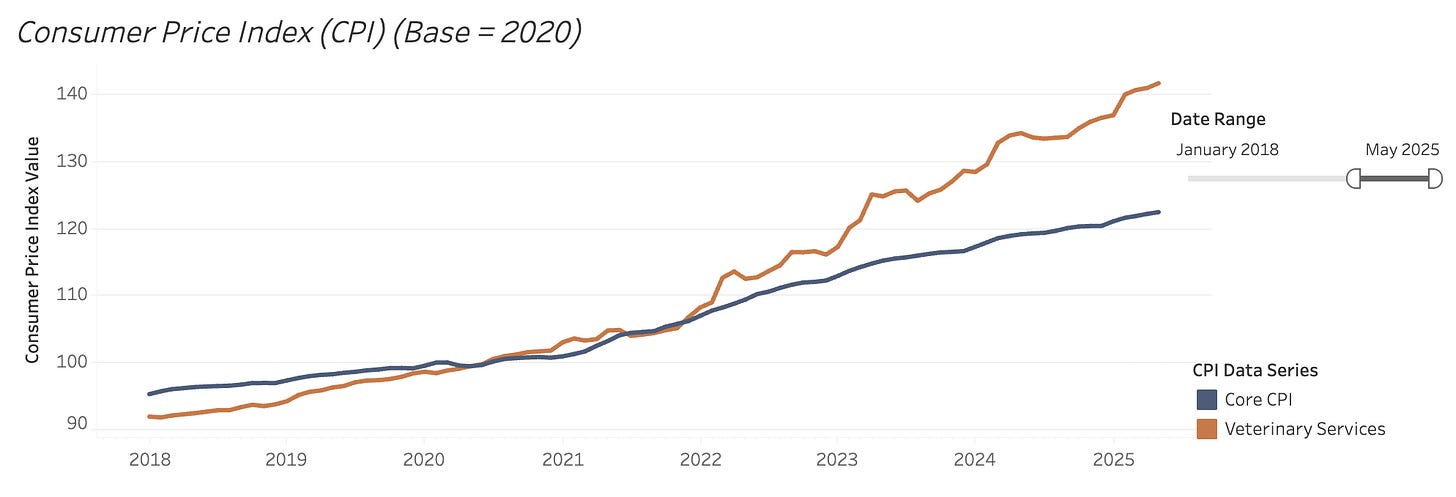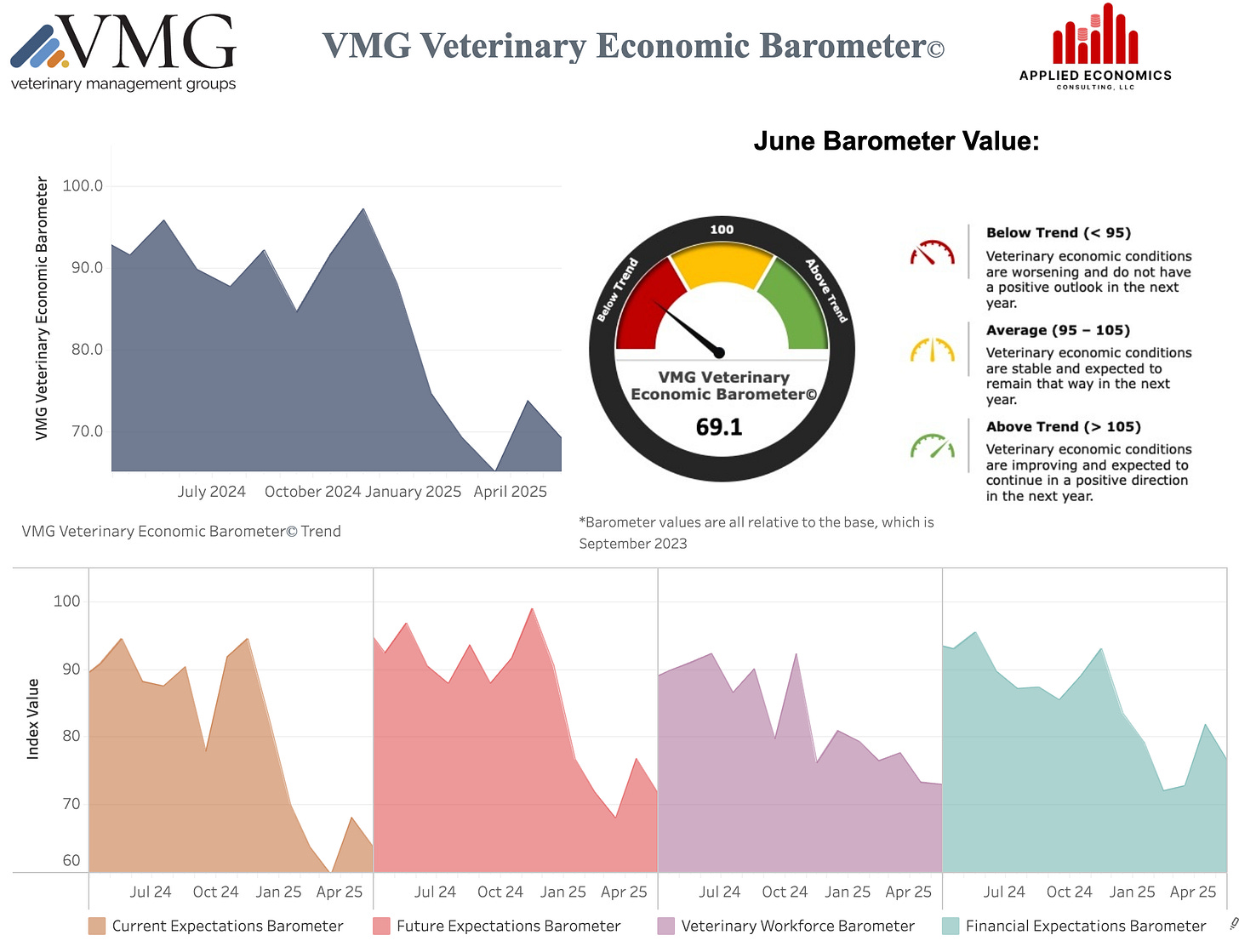There’s a recurring gag on the old Looney Tunes cartoon: Wile E. Coyote chases his arch-nemesis Roadrunner across a cliff overlooking a canyon. Initially, he seems to be defying gravity and floating on air. Inevitably, he looks down, realizes he’s doomed, and plummets to the earth.
I was reminded of this bit when the dismal July jobs report—which included two dramatic downward revisions for May and June—came out a few weeks ago. For months now, economists have been asking themselves the $64,000 question:
If all of the new administration’s tariffs and other policies were so bad, why haven’t they shown up in the jobs and growth numbers?
Well, it seems like there’s a simple answer—the situation is worse than the preliminary data suggested. The economy has likely been softening for months. When you subtract large CapEx investments in AI from Big Tech and modest gains in human healthcare, the broader economy might already be in a recession.
Did this new information shake the faith of the administration? Of course not!
President Trump responded predictably by attacking the numbers as “rigged” against him and firing the head of the Bureau of Labor Statistics (BLS), Dr. Erika McEntarfer, who was confirmed with broad bipartisan support just last year. His nominee to replace her, E.J. Antoni, finished his PhD in 2020, has not practiced as an economist at a bank or university, and floated wild ideas like ending the release of monthly jobs reports altogether. I guess that plan does make a certain amount of perverse sense: you can’t have a bad jobs report if there are no more jobs reports!
So, what is the deal with the economy??
If you were skeptical of the government’s monthly unemployment reports, you could look to data collected by the private sector. The career site Indeed.com shows a decrease in job postings for most of 2025, and the July numbers were lower than June.
Not only are there fewer jobs being advertised, but the listed salaries are flattening out:
What about the veterinary industry specifically? I can tell you that in the past few weeks, multiple pathologist friends in the pharmaceutical sector lost their jobs as part of large cost-cutting layoffs. A substantial number of vets at federal agencies including the USDA, FDA, and CDC have also been sacked by DOGE.
For me personally, I recently found out that at least one of the jobs I was rejected from went unfilled; the organization quietly pulled the position after they lost funding. Plenty of my other applications were likely for “ghost jobs” that were already filled internally. Even legitimate opportunities are offering dramatically reduced compensation, with one recent remote clinical pathologist position listing a top salary of $5,000 less than I started at in January 2020 for an almost identical job, representing a 23% decrease when adjusted for inflation!
The Economic Dashboard at the Veterinary Management Group (VMG)1 paints a similar picture to the anecdotes above. They find that people are spending less on their pets than overall household expenses:
This should not be surprising since veterinary prices continue to way outpace inflation:
All of this together explains why practices surveyed by the VMG express low (and declining) confidence about their future earning potential and hiring needs:
Finally, one data point I find particularly interesting is that the percentage of vets who work relief full time—that includes me 🙋🏻♂️—increased from 6% in 2023 to 9.1% in 2024, which represents thousands of veterinarians. While there are multiple possible explanations for this ranging from positive (wanting more flexibility or money) to negative (lack of opportunities, poor experience at work), this group also reported the highest burnout and least satisfaction with the profession.
Where does this leave us? While the data is messy, my subjective personal job search experience, recent anecdotal news from my friends, and different strands of reporting from different sources all point to a similar conclusion: The economy broadly, and veterinary medicine specifically, is experiencing a slow-down in growth, profits, and hiring. On the one hand it makes me feel a little better about my job search challenges knowing that some component is macroeconomic stuff I can’t control. But on the other, it worries me since what I see in pretty much every direction is denial of the problem.
The current administration seems to think that slashing federal jobs and implementing a variety of inflationary policies will not have any negative impact on the economy. Their “solution” is to shoot the messenger rather than admit error and change course. Similarly, many veterinary leaders are also denying reality. Some continue to baselessly claim veterinary medicine is “recession proof.” Instead of admitting high fees are dampening demand, we’re continually trying to make up for lost revenue by raising prices. Instead of taking stock of the weakening job market for DVMs, influential leaders in our profession continue to insist we have a shortage of vets and are pushing forward with opening new vet schools, expanding class sizes, and lobbying for midlevel practitioners like VPAs.
I’m not trying to be a Debbie Downer here, my goal is to snap people out of complacency in time to make smarter choices. Like Wile E. Coyote, we can keep sprinting ahead with our eyes closed, pretending the ground is still beneath us and hoping momentum alone will carry us forward. But sooner or later, gravity wins. The difference is that we aren’t cartoon characters; we have the ability to recognize the cliff edge, slow down, and plan a safer landing. The sooner we confront the reality in front of us, the better positioned we’ll be to adapt.
—Eric
The VMG is run by multiple DVMs in private practice and their lead data analyst is Matthew Salois, PhD, who was the chief economist at the AVMA from 2018-2022.













A colleague recently said that the Boomers are trying to get everything they can get before it all goes belly up. Sad but feels true??
Reminds me of 2020
On June 15, 2020, during a White House roundtable discussion, he said, “If we stopped testing right now, we’d have very few cases, if any,” and added, “If you don’t test, you don’t have any cases”.
He reiterated this sentiment in subsequent remarks, claiming the U.S. had more cases than other countries simply because it conducted more testing.
Follow the yellow brick road....